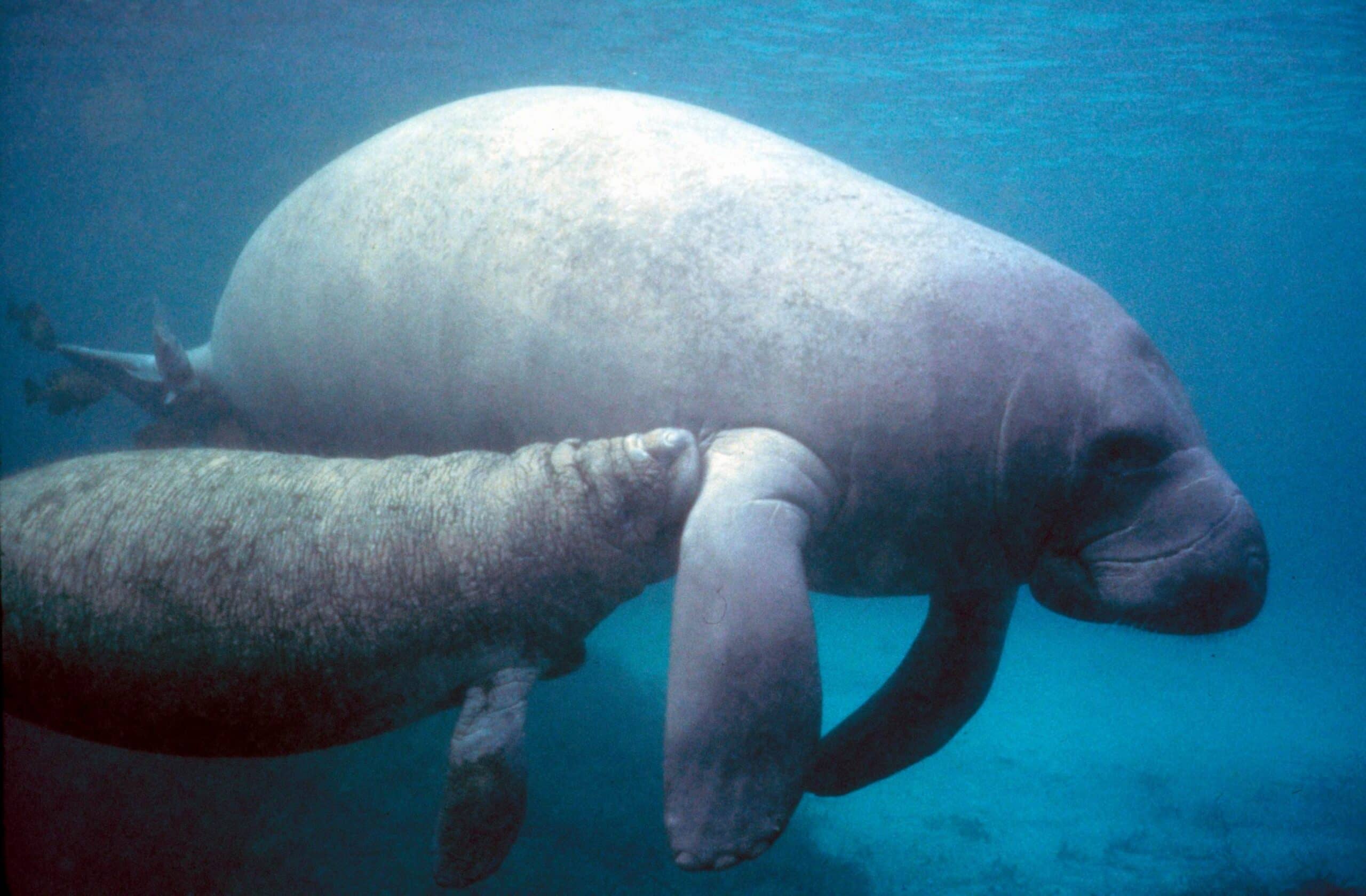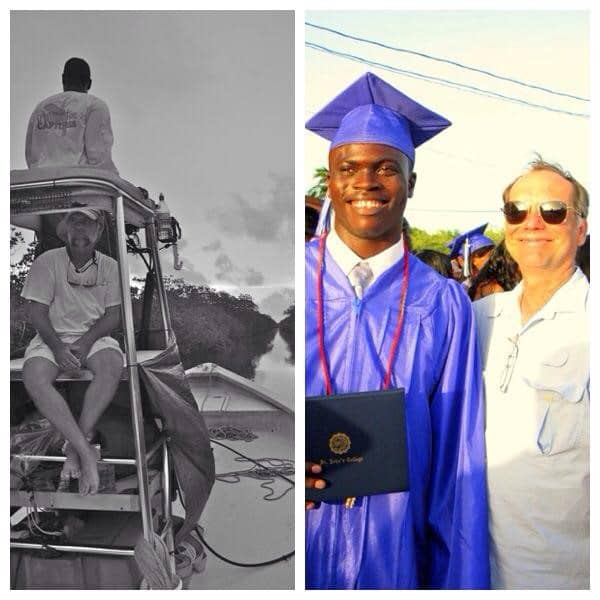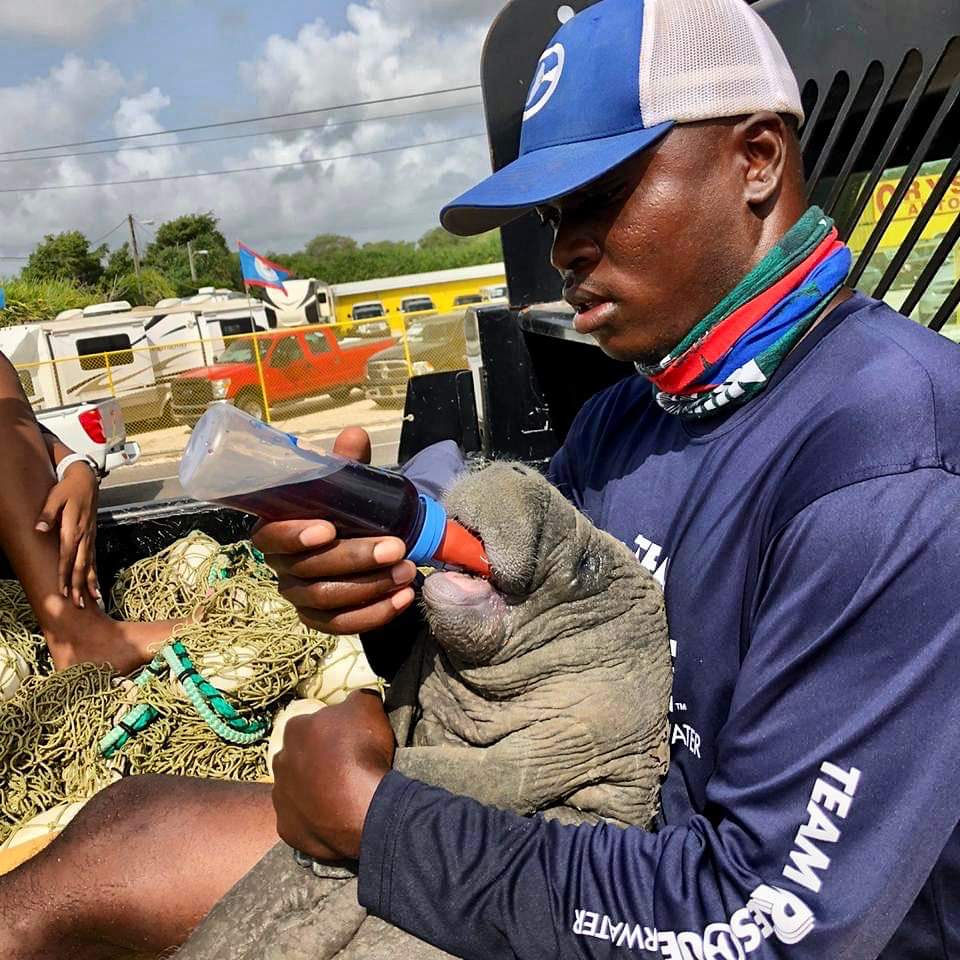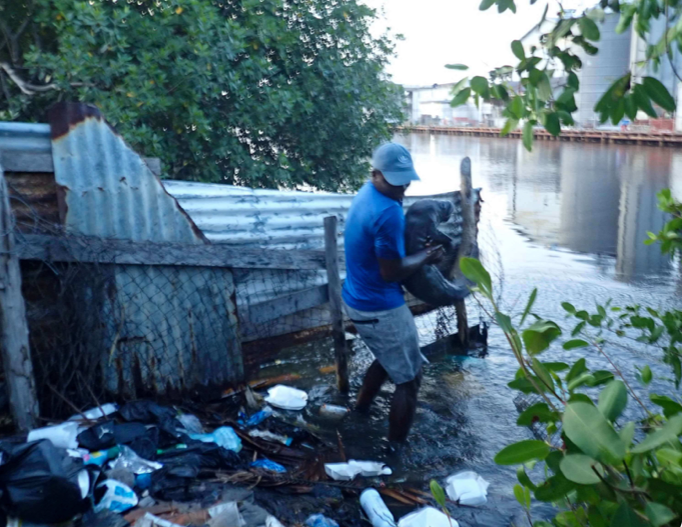Thrive
Meet the Clearwater Marine Aquarium’s ‘Manatee Man’

Manatee encounters were a way of life for Jamal Galves as a poor boy growing up in a small village in Belize. However, a group of American conservationists working near his grandmother’s property was unequivocally unique.
The village on the western edge of the Caribbean Sea is known as Gales Point Malanti (manatee in English), as it’s home to the world’s highest-known density of Antillean manatees. While Galves noted the village’s population has never exceeded 1,000 people, he compared manatee sightings to seeing a bird or a dog. They were that common.
At 11, Galves and his cousins noticed a peculiar-looking boat emblazoned with “Clearwater Marine Aquarium” (CMA) drive past his grandmother’s property. They began playing “manatee rescue,” mimicking the vessel’s researchers and arguing over who was the doctor or boat captain.
Galves yearned to do more than just pretend to be a manatee conservationist. He mustered the courage to approach the group’s leader, Dr. James “Buddy” Powell, a local legend in the marine conservation world.
“I approached him and said, ‘I want to come out with you guys,” Galves told the Catalyst. “He looked at me, shook his head for a second, and said, ‘Ah kid, you’re too small.'”

Jamal Galves (top and left) said Dr. James “Buddy” Powell, chief zoological officer for CMA, became a father figure.
Chance encounters
Powell is CMA’s chief zoological officer and executive director. He also founded the Sea to Shore Alliance, a mission-focused, field-oriented research and conservation organization now known as the CMA Institute.
In 1997, Powell began the Belize manatee conservation project. He hired Galves as a field assistant in 2008.
Galves credits Powell, “a father figure,” and CMA for saving his life. The two conservationists have also protected countless endangered manatees.
Powell has referred to Galves as a “rock star” in interviews. His “Manatee Man” Instagram account has nearly 75,000 followers.
Acclaimed wildlife ecologist Dr. Rae Wynn-Grant highlighted his story on her Webby Award-winning Going Wild podcast Sept. 26. Galves, also a National Geographic Explorer, now oversees the Belize Manatee Conservation program.
He became the youngest Belizean to earn the Meritorious Service Award for his education, outreach and public policy impacts. Galves said Powell and CMA made those achievements and his next goals possible.
A year after his initial rejection – and after another “crying face” – Powell relented and brought a young Galves on the boat. Galves said Powell shook his head again and said, “Ah kid, let’s go.”
In 1967, Powell had a similar encounter as a kid growing up in Crystal River, about 90 miles north of St. Petersburg. He told the Discover Crystal River magazine that as a teen, he noticed a young man peering through binoculars on a Jon boat without a “fishing pole or a can of beer.”
“So, I thought, he’s not from around here,” Powell told the publication.
That man was Daniel Hartman, a Cornell University graduate student who would take the Citrus County kid under his wing. Powell, now a world-renowned conservation biologist, returned the favor in Belize.

Jamal Galves, who frequently visits CMA’s Clearwater headquarters, has become something of a folk hero in Belize.
A calling
“Even as an 11-year-old kid, I wished I had some sort of superhero power to just pick them (manatees) up and take them somewhere safe,” Galves said.
He woke up between 5 and 6 a.m. daily to wait for CMA’s boat to arrive on a brackish lagoon teeming with manatees. Galves said he asked and received answers to every manatee conservation question imaginable.
Galves said he was barely four feet tall the first time he jumped in the water to secure a net. “I could barely stand up,” he added with a laugh.
“I remember hearing them shouting, ‘Kid! Kid, get out of there!’”
Powell promised Galves that his time would come. CMA officially hired him at 16, and Galves began to work his way up the ranks.
Long before international speaking engagements and National Geographic, Galves eagerly washed boats. “There was no one below me,” he said.
The organization noticed his drive and dedication and paid for his education. Powell became a father figure, even a “savior,” to a boy from a “very poor community” known for gun violence.

Jamal Galves rescues a manatee calf from polluted waters.
Gales Point Malanti
A 2009 study established that Gales Point Malanti was a maroon community settled by people escaping colonial enslavement in the late 1700s and early 1800s. It became reliant on fishing and known for its extensive Antillean manatee population.
The marine mammal is one of two subspecies of the West Indian (North American) manatee. The other is the Florida manatee, and scientists consider both endangered.
Newsweek reported the Antillean population is down to around 1,000 animals. As in Florida, Galves said habitat loss and resulting starvation are replacing careless boaters as the primary cause of manatee deaths.
“Belize is a mirror of Florida,” he explained. “What we see in Florida eventually starts to become an issue here, as well.”
However, Galves and CMA’s Belizean team have made a difference. They established myriad sanctuaries, speed zones, laws and regulations to safeguard an animal that scientists consider a bellwether species for marine ecosystems.
Galves said his and the organization’s success is beyond his “wildest dreams.” He is also “extremely” grateful for a platform that allows him to help people understand manatees’ plight.
What’s next?
CMA recently broke ground on a long-awaited Manatee Rehabilitation Center at its Clearwater headquarters. The facility will help mitigate what the Florida Fish and Wildlife Conservation Commission declared an “Unusual Mortality Event.”
Galves still works closely with Powell and his local colleagues and makes about six annual trips to Clearwater. He returns to CMA headquarters Oct. 12.

From left: Frank Hibbard, former mayor of Clearwater; Chris Sprowls, former speaker of the Florida House of Representatives; Dr. James “Buddy” Powell, chief zoological officer for the Clearwater Marine Aquarium; Loretta Murray, stakeholder engagement manager for Duke Energy; Clearwater Mayor Brian Aungst Sr.; and Joe Handy, CEO of the aquarium, at a manatee center groundbreaking ceremony.
Galves is now working to develop a new manatee facility in Belize. He said the number of students seeking to follow in his footsteps has increased alongside mortality rates.
He envisions it as a global educational facility to foster the next generation of conservationists and biologists. “There’s so much more work to be done,” Galves said. “And not enough people to do it.”
The center will operate under the CMA umbrella, and he wants people to know the organization’s work extends far beyond Pinellas County. “And the support that we get from visitors to the Clearwater Marine Aquarium, and supporters around St. Petersburg and the Tampa Bay area, is way beyond what we could imagine,” Galves said.
“A small donation has a significant impact in small places like Belize,” he added. “You can be a part of conservation; you can be a part of change.”







